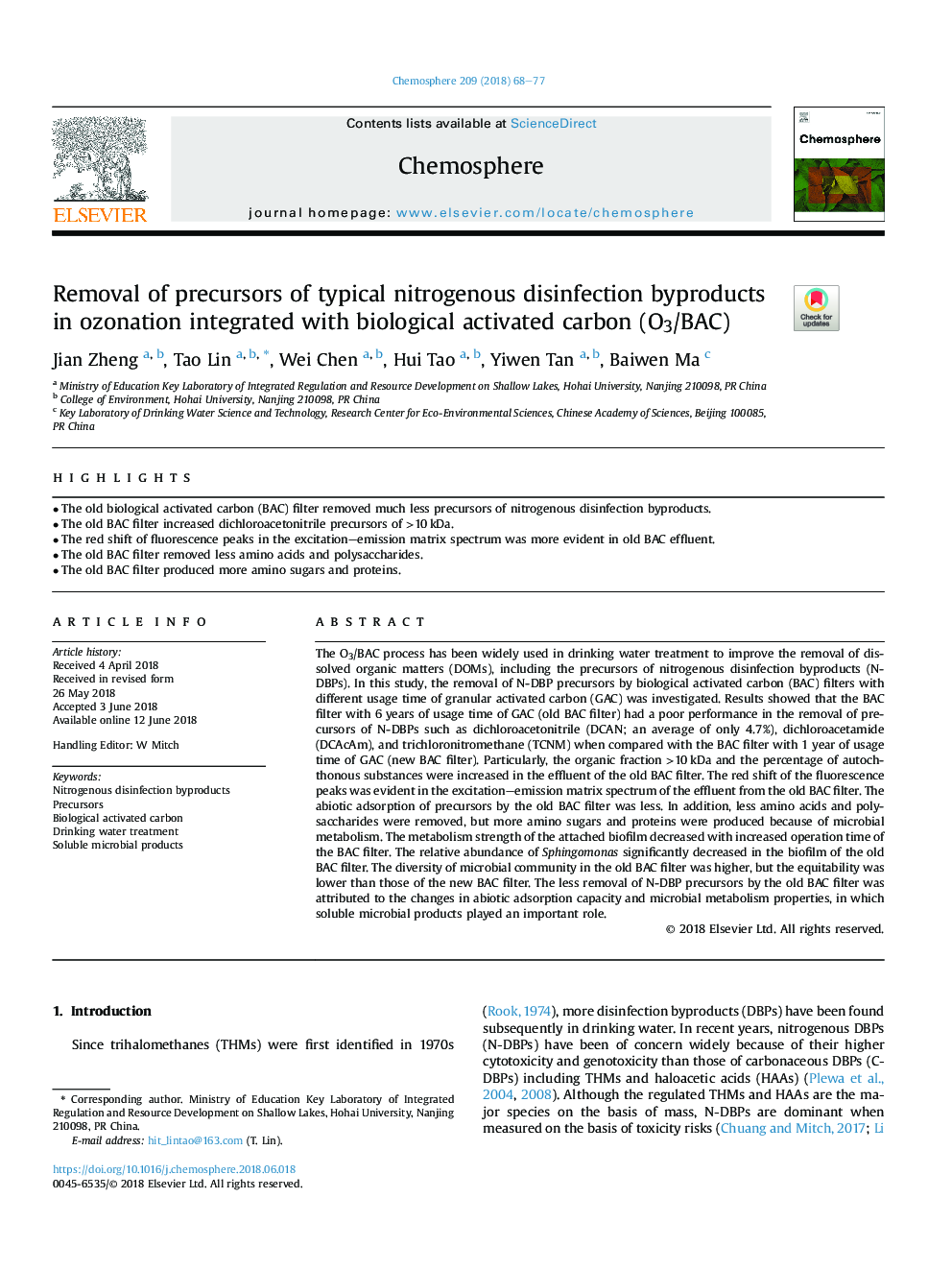| Article ID | Journal | Published Year | Pages | File Type |
|---|---|---|---|---|
| 8850619 | Chemosphere | 2018 | 10 Pages |
Abstract
The O3/BAC process has been widely used in drinking water treatment to improve the removal of dissolved organic matters (DOMs), including the precursors of nitrogenous disinfection byproducts (N-DBPs). In this study, the removal of N-DBP precursors by biological activated carbon (BAC) filters with different usage time of granular activated carbon (GAC) was investigated. Results showed that the BAC filter with 6 years of usage time of GAC (old BAC filter) had a poor performance in the removal of precursors of N-DBPs such as dichloroacetonitrile (DCAN; an average of only 4.7%), dichloroacetamide (DCAcAm), and trichloronitromethane (TCNM) when compared with the BAC filter with 1 year of usage time of GAC (new BAC filter). Particularly, the organic fraction >10â¯kDa and the percentage of autochthonous substances were increased in the effluent of the old BAC filter. The red shift of the fluorescence peaks was evident in the excitation-emission matrix spectrum of the effluent from the old BAC filter. The abiotic adsorption of precursors by the old BAC filter was less. In addition, less amino acids and polysaccharides were removed, but more amino sugars and proteins were produced because of microbial metabolism. The metabolism strength of the attached biofilm decreased with increased operation time of the BAC filter. The relative abundance of Sphingomonas significantly decreased in the biofilm of the old BAC filter. The diversity of microbial community in the old BAC filter was higher, but the equitability was lower than those of the new BAC filter. The less removal of N-DBP precursors by the old BAC filter was attributed to the changes in abiotic adsorption capacity and microbial metabolism properties, in which soluble microbial products played an important role.
Related Topics
Life Sciences
Environmental Science
Environmental Chemistry
Authors
Jian Zheng, Tao Lin, Wei Chen, Hui Tao, Yiwen Tan, Baiwen Ma,
